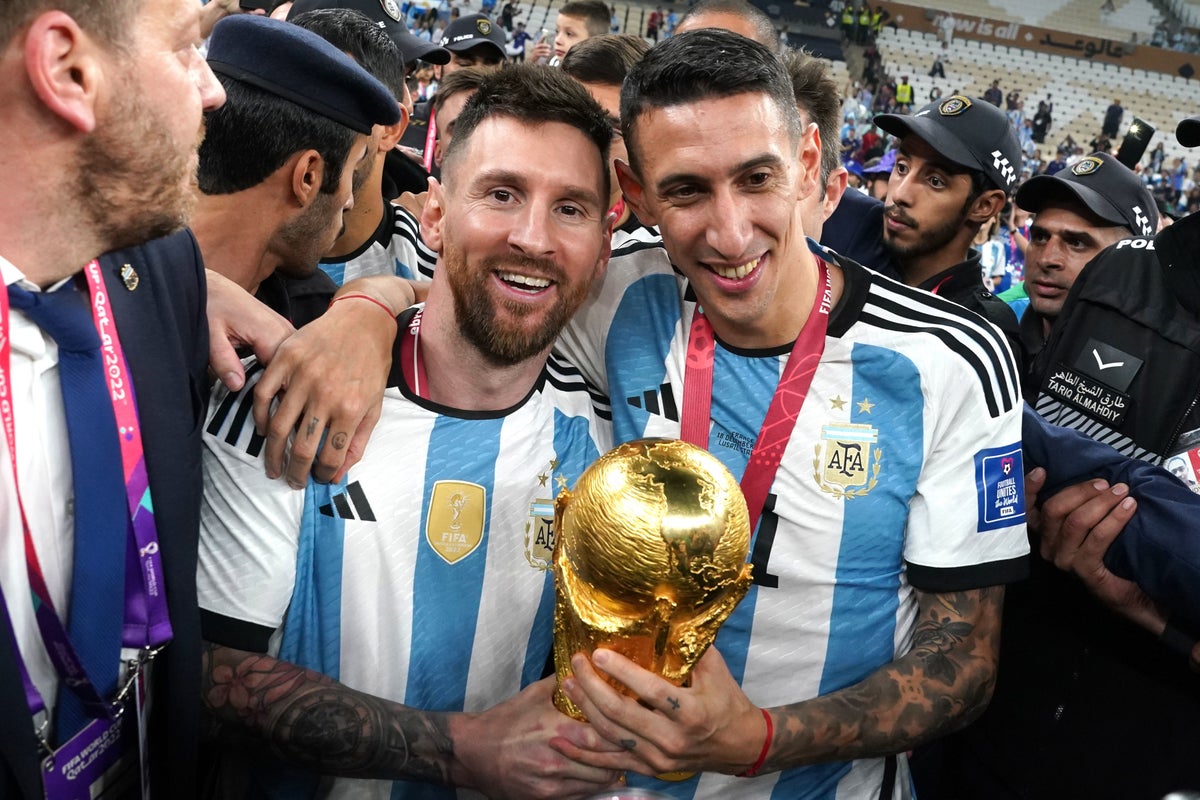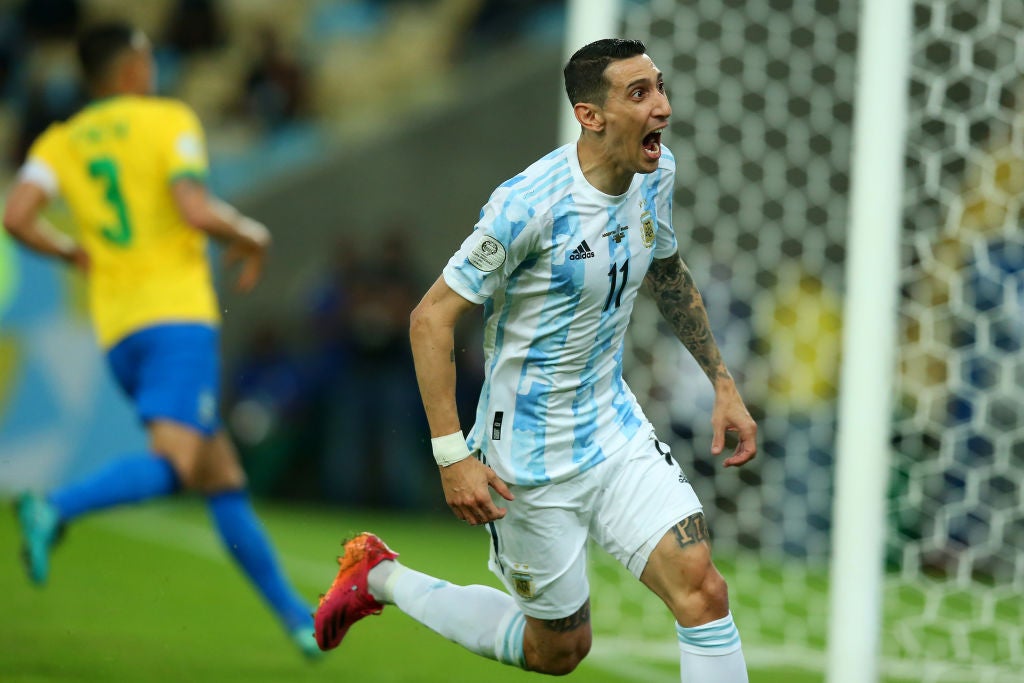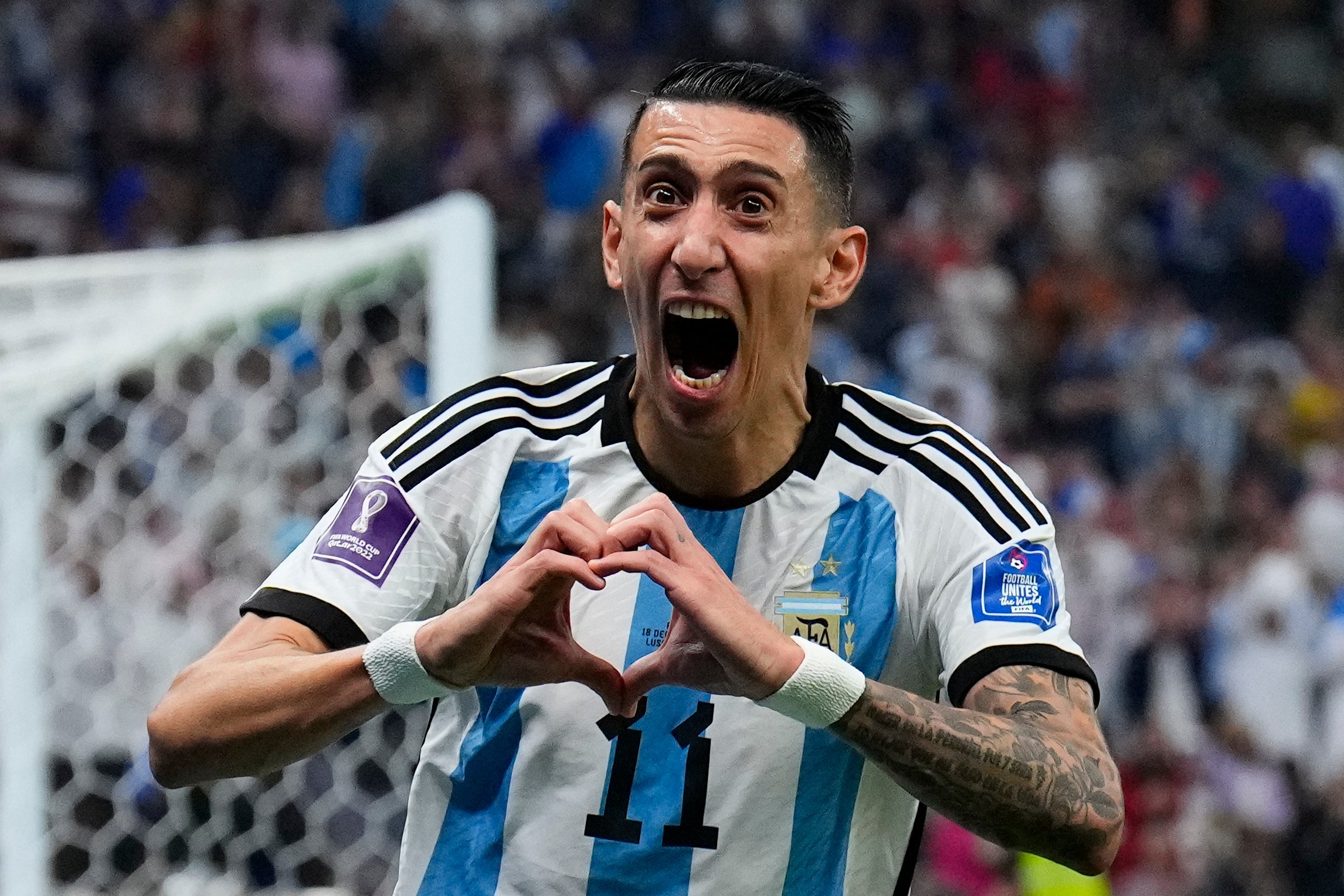
After 63 minutes of the World Cup final, or about 10 minutes Before the Chaos Era (BCE), No 11 lit up the fourth official’s board and almost every corner of the stadium stood in reverence. They had come to see Lionel Messi’s coronation as one of football’s three kings, but first they had been treated to a gift from a wise man. Angel Di Maria was tiring now, but his first-half brilliance was why Argentina were surely about to win the World Cup.
It was not as if France hadn’t been warned. For 20 minutes it was hard to know whether you were watching a World Cup final or the public roasting of Jules Kounde. Di Maria crept up and down the touchline over Kounde’s shoulder, lurking in the shadows as Argentina peppered cross-field balls over the head of the French right back, who wore the look of a man staring into a thousand suns. Once Kounde scuttled out to meet him, Di Maria offered up his array of old tricks: a drop of the shoulder, a stop-and-go, an injection of pace from those 34-year-old legs.
The French players could see what was happening but they were powerless to stop it. Kounde eventually got support from his winger Ousmane Dembele on the cover, but the only thing worse than a Barcelona defender trying to deal with Di Maria was a Barcelona winger trying to deal with Di Maria.
The Argentine trapped a pass and approached the byline but as Dembele moved to block the cross, Di Maria dummied and chopped inside in one motion, spinning the Frenchman into crisis. In his desperation to recover, he clipped Di Maria’s heels and the referee pointed to the penalty spot.
After Messi converted from 12 yards, there was then Di Maria’s goal – a thing of beauty. Alexis Mac Allister passed to Messi and ran into the French half, and by the time he was up to full speed Messi had flicked to his young partner Julian Alvarez, who fed a perfect pass into Mac Allister’s path. He looked up to see Di Maria unmarked at the far post and the ball was perfect, low and inviting. Di Maria accepted it gratefully with a bumping finish over Hugo Lloris.
Thirty-six minutes, two goals, and France’s gameplan was in tatters. At this point the game seemed to be over, and it was impossible not to think of how important Di Maria had been to The Messi Story.

Like in Qatar, Messi won the best player’s golden ball at the 2014 World Cup in Brazil. But in truth it was Di Maria who starred in much of Argentina’s run to the final, and the injury that ruled him out of their showdown with Germany at the Maracana may have been a turning point in history. Aged 27, at the peak of his powers, this was surely Messi’s best chance of winning a World Cup, but Di Maria wasn’t by his side and it slipped away.
Then in 2021, after three heartbreaking defeats in Copa America finals, the last of which compelled Messi to briefly retire from international football, Argentina reached the final again. They were back in the Maracana, this time against tournament hosts Brazil, but now Di Maria was there. In the first half he latched on to a through ball and with one touch lifted it over the stranded Ederson.
Messi was peripheral in that final, even missing a simple chance to kill off the game in the last minutes. Di Maria had been the matchwinner while goalkeeper Emi Martinez had made crucial saves, just as he did in this World Cup final, but when the whistle blew, Argentina’s players ran to neither of them but to Messi, who had collapsed onto his knees. Finally, aged 33 after four bruising final defeats, Messi had won a trophy for Argentina and the shadow of Diego Maradona was lifted.

With hindsight, perhaps Di Maria’s substitution was a turning point in this final with France. You already know what happened next: nine minutes later Nicolas Otamendi clattered into the back of Randal Kolo Muani and Kylian Mbappe equalised from the penalty spot; 90 seconds after that, Mbappe scored a beautiful second, and the game was on its head.
Why did manager Lionel Scaloni remove his most threatening player? Partly it was tactical, a way of shoring up the midfield with a defensive-minded player in Marcos Acuna. Di Maria had been sensational but his influence on the game was waning as the second half went on. The substitution may have been pre-planned: after starting the first two games of the tournament, Di Maria had played only cameo roles and had been receiving treatment for an injury. Perhaps Argentina’s medical department thought he could not manage more.
It is not so important now. Di Maria’s influence on Messi’s path to the moment he lifted the World Cup trophy should not be forgotten. He is an essential part of the story. Messi’s 35-year journey started on the streets of Rosario and saw him ascend to a place where only the footballing gods reside, carried on the wings of Angel.







